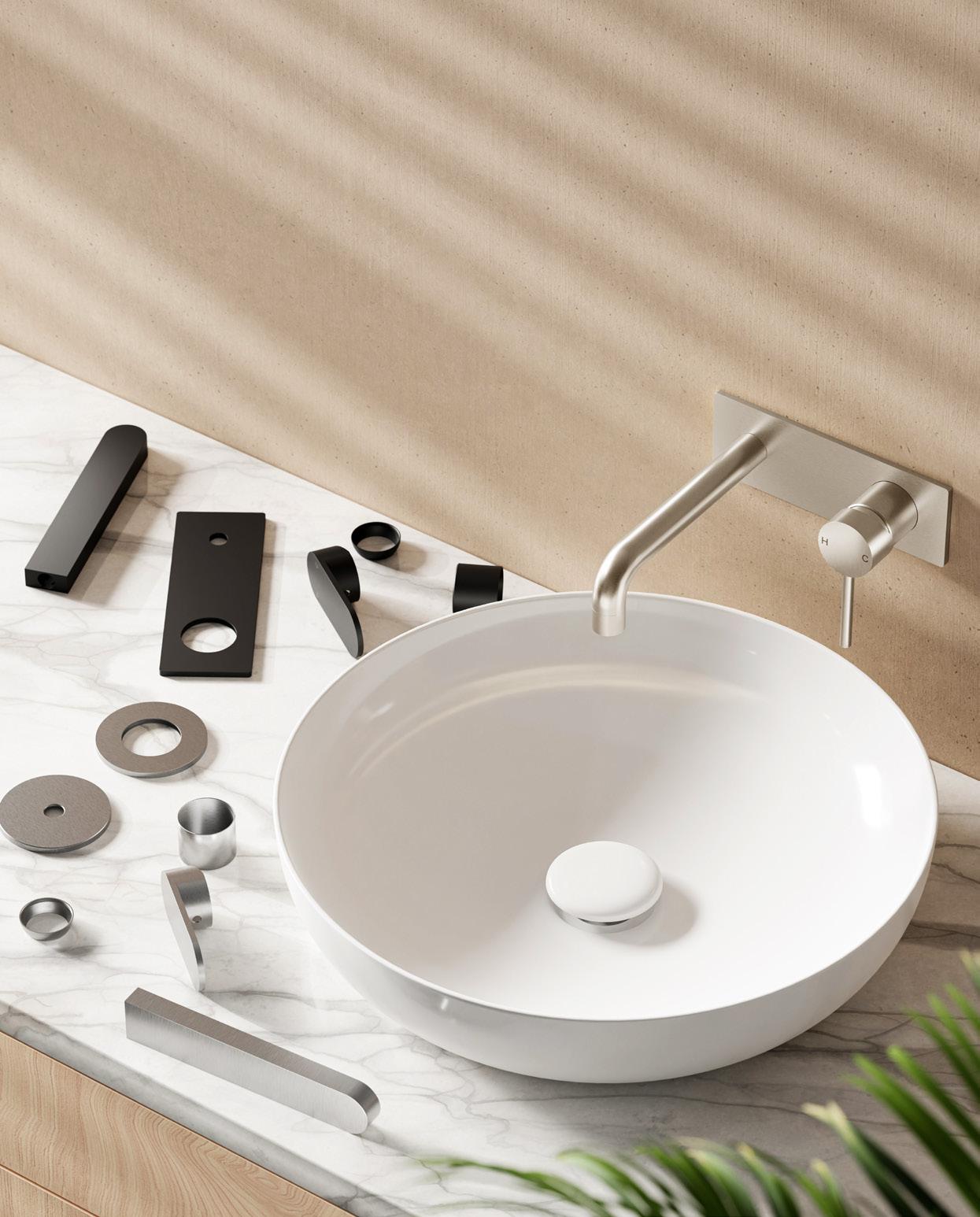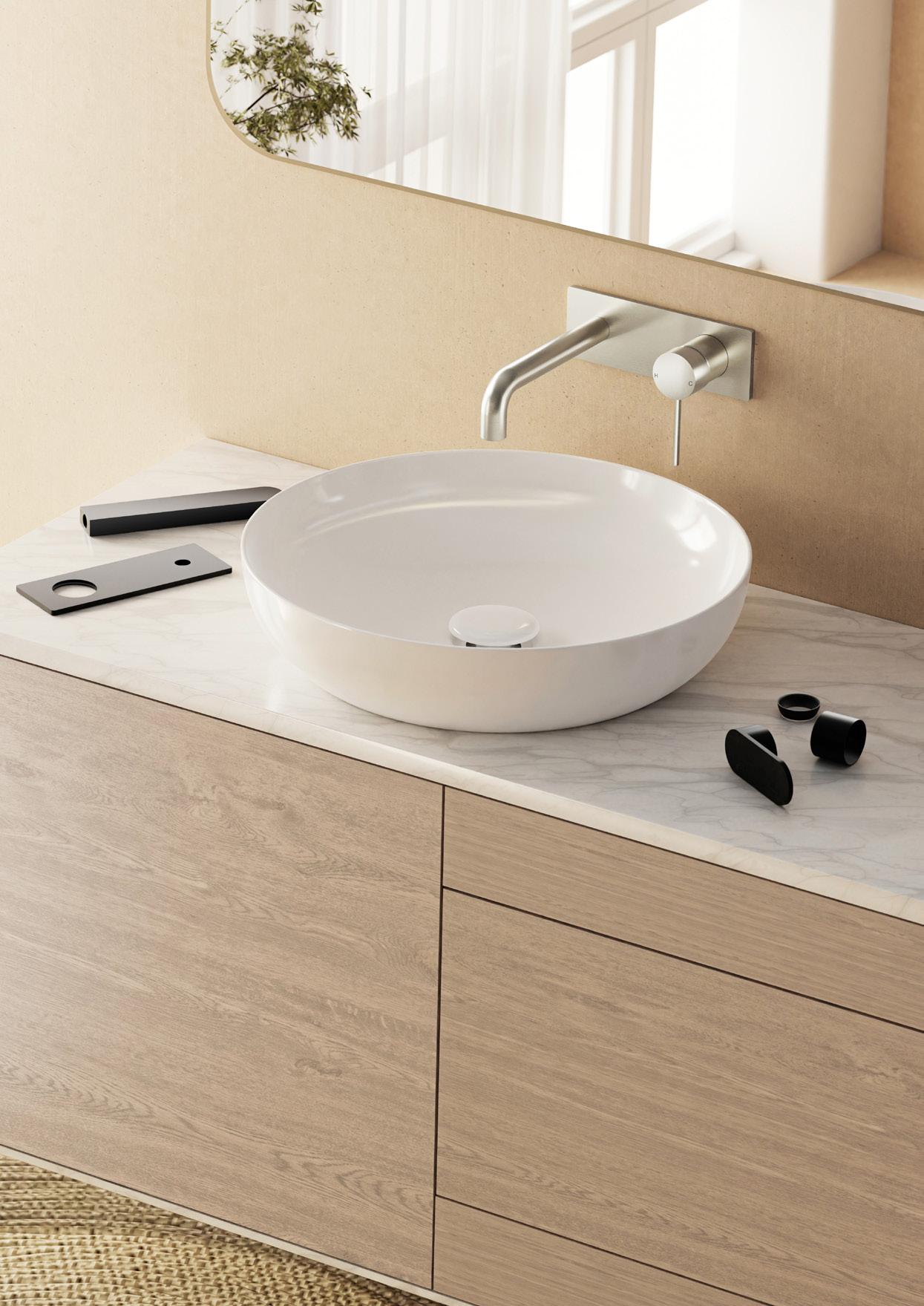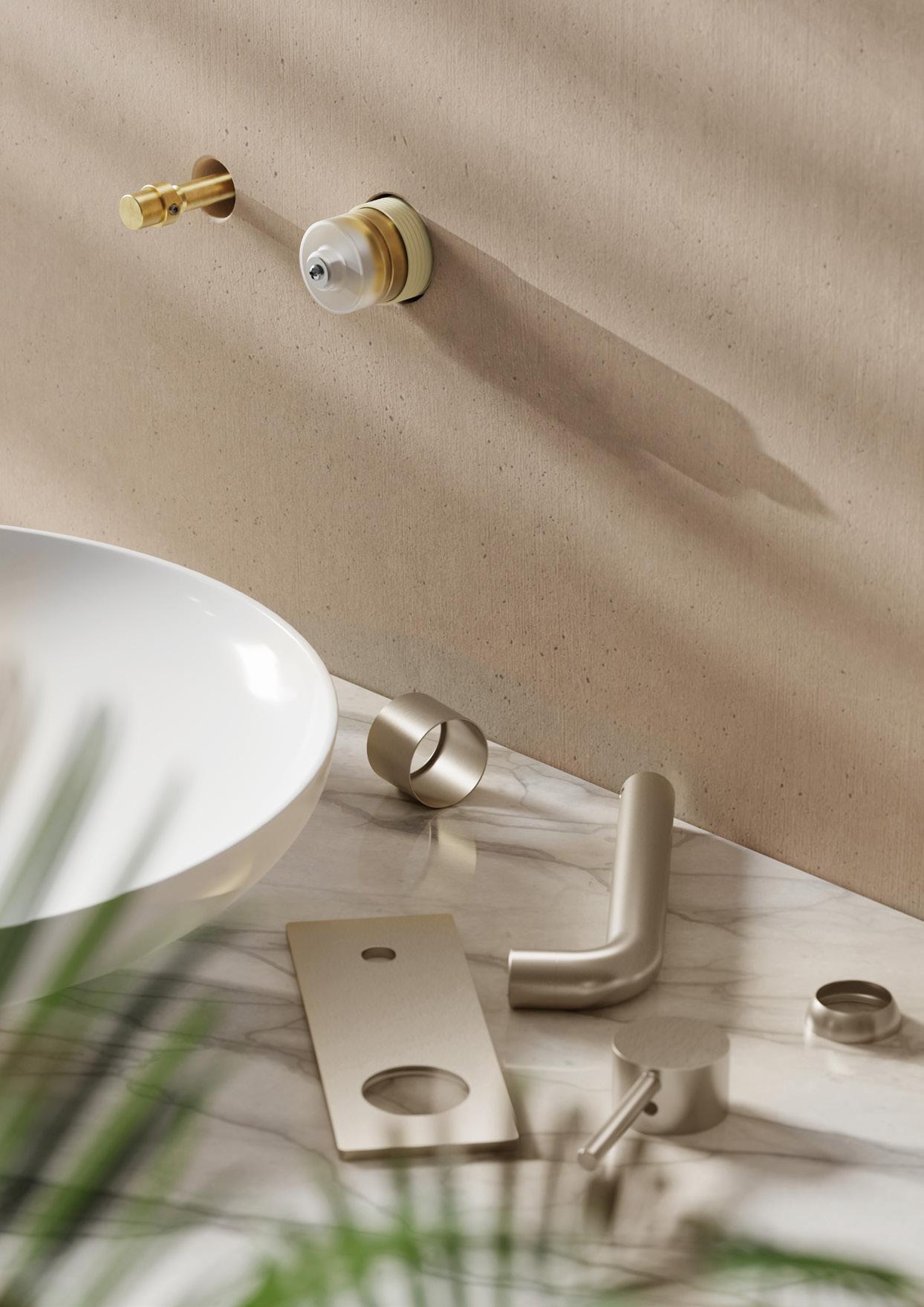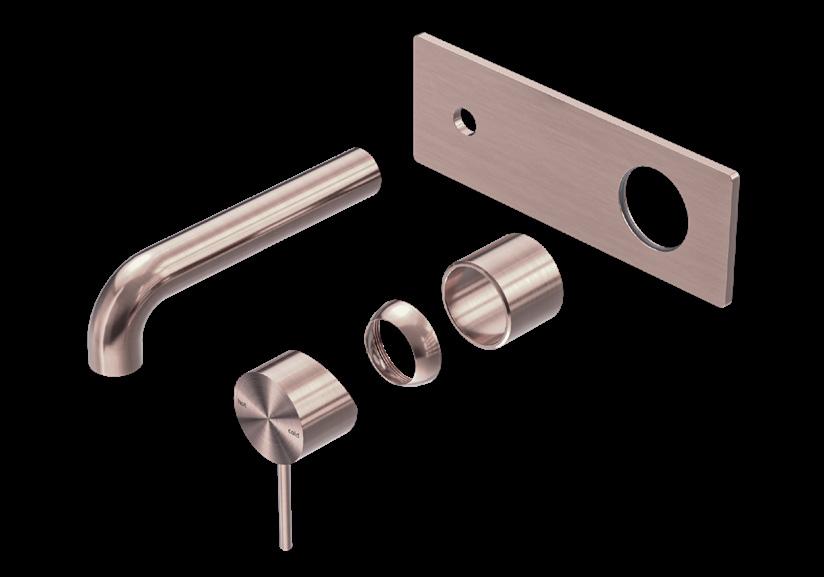A Universal Approach to Bathroom Installation

INTRODUCTION
Successful bathroom designs balance aesthetics and functionality to deliver a comfortable experience that matches the tastes and preferences of users. No matter how complex or basic a design is, a harmonious and consistent visual style will make it stand out. With tastes and trends changing at a fast pace, flexibility is essential when constructing a modern bathroom.
Modern bathroom design can take on many meanings. Some users prefer a classic, all-white look with traditional fixtures and finishes, whereas others will gravitate to an ultra-modern aesthetic with metallic surfaces and glossy tiles. Wood and concrete tones are appearing in contemporary designs to bring warmth and character, while others are incorporating pops of bold colours to convey a playful or whimsical personality.
It naturally follows that customers place great importance on having taps, baths, and showers that are aesthetically on-trend, visually harmonious and functional. Because of this, the design process in general and selecting the right finish can both take longer than expected. With the wide array of styles to choose from, having a robust palette of materials, textures and finishes at your disposal is essential to match the aesthetic preferences of every client.
Universal in-wall bodies allow builders and customers to select the right fittings even after the tilers have finished thereby increasing the chances of delivering a successful bathroom design. Below we consider the importance of design flexibility, and why universal in-wall bodies are an essential tool for your next bathroom build.


“Universal in-wall bodies enable customers to delay their design decision until later in the building process. This ensures that the final selection is informed by the latest trends around style and colour.”

WHY FLEXIBILITY IS IMPORTANT
Modern bathroom design has gained significance over time for a variety of factors, including comfort, accessibility and health. When bathrooms were first introduced in the typical home, designs focused on simplicity and practicality. Bathrooms were functional spaces where individuals would tend to personal hygiene first and foremost. Consequently, they were designed as hospital-like spaces with sparse white fittings and few decorative elements.
Over time, the modern bathroom has evolved into a private sanctuary focusing on comfort and wellbeing. This has been achieved by using comfortable, ergonomic fixtures and improving the environment as a whole. Organic textures, lighting and a wider array of finishes have been used to enhance the atmosphere of today’s bathroom spaces, while smart technologies are being used to increase hygiene, convenience and functionality.
One of the most significant design evolutions throughout the history of the bathroom is the shift away from the
clinical all-white aesthetic and the introduction of more vibrant colours schemes. Beautiful colour combinations were chosen to lend a sense of individuality and imagination to the space. This pertains to the colours of the bathroom’s walls, floors, and new colours and finishes applied to standard fittings like tapware. Having flexible, design-centric solutions is essential to making the best design choices for every project. The choice of tapware is integral to creating a cohesive design as it is commonly used as the reference point for matching accessories and finishes. Due to this, customers frequently take their time selecting the ideal colours and finishes for their fixtures, which can cause the bathroom installation process to be interrupted or delayed. The creation of universal bodies resolves this problem for the benefit of owners, designers, builders and all other stakeholders in the bathroom build process.
WHAT IS A UNIVERSAL IN-WALL BODY?
A universal in-wall body is an installation that separates the in-wall body from the trim kit. The trim kit refers to the visible pieces of the shower, tap and other fixtures. After installation, tapware and other visible fittings can be updated and replaced thanks to special in-wall components and interchangeable trim kits.

How does it work?
In a building project, the “rough-in” stage when some major components of the house are installed. One of these components are the initial plumbing lines. The “rough-in plumbing” is when a plumbing contractor installs the plumbing pipes inside the building walls
before the plasterboard is applied over them. It is at the rough-in stage that the universal in-wall body can be installed before the final tapware selection is made.
After the universal in-wall body is installed, the wall can be plastered and tiled. The customer can take their time selecting the fixtures to match their preferred style and aesthetic. The final selection of fixtures can occur after the building process is completed, which minimises the risk of theft and damage. If the customer is unable to make a selection, fixtures in the initial finish can be installed.
The final stage of the build is often referred to as the “fit-off”. This is when the trim kit is installed.
BENEFITS
Keep up with the latest trends
Bathroom design trends are ever-evolving. Waiting for customers to choose their finishes can be a long process, increasing the risk of schedule delays and budget overruns, especially in large builds.

Universal in-wall bodies enable customers to delay their design decision until later in the building process. This ensures that the final selection is informed by the latest trends around style and colour. It also gives customers the opportunity to see how the rest of their interior design evolves throughout the project and match finishes accordingly.
Make installation easier
Universal in-wall bodies offer several advantages
to plumbers and contractors. As there is no requirement to select or purchase fixtures until later in the project, trim kits do not have to be stored until fit-off. Any delays in choosing the ideal finish set will not interrupt the installation process thus saving valuable time and costs.
Future design flexibility
The design flexibility provided by a universal in-wall body extends well into the future of the building. Customers have the ability to change styles and colours simply by updating the trim kit. Replacing the trim kit is fast and easy with no need to remove tiles or damage the wall surface. As manufacturers design and produce new collections, customers have the ability to change the look of their space without any major renovations.
“Replacing the trim kit is fast and easy with no need to remove tiles or damage the wall surface. As manufacturers design and produce new collections, customers have the ability to change the look of their space without any major renovations.”

